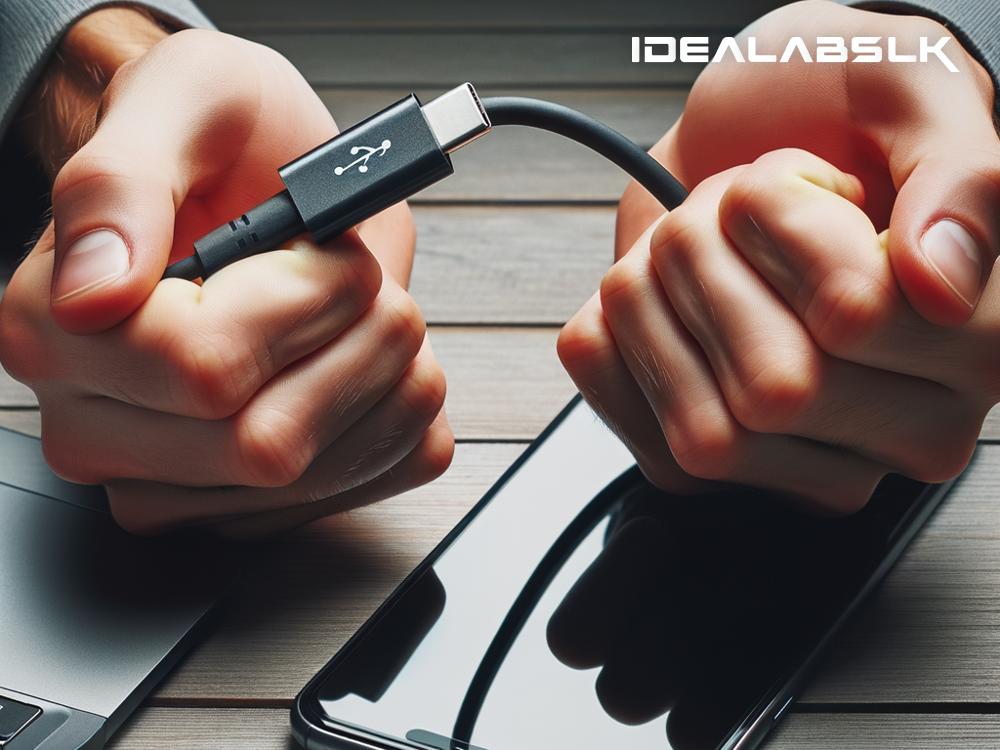Fixing 'Cannot Use USB-C Devices on Smartphones': A Simple Guide
In today's technologically advanced world, smartphones and USB-C devices go hand in hand like bread and butter. From charging cables to earphones and even external hard drives, USB-C has become the universal standard for most modern gadgets. However, sometimes you might plug in a USB-C device to your smartphone, and nothing happens. Frustrating, right? Don't worry, though. This guide will walk you through some simple steps to troubleshoot and fix the issue of 'Cannot Use USB-C Devices on Smartphones'.
1. Check the Compatibility
First things first, not all USB-C devices are made equal, and neither are all smartphones. Some devices might not be compatible with your smartphone model. It's always a good idea to check the product information for both your smartphone and the USB-C device to ensure they're supposed to work together. If they're not compatible, you've found the problem.
2. Inspect the Hardware
The most common reason your smartphone might not recognize a USB-C device is hardware issues. Here's what to look for:
a. Damaged Cables or Ports
Inspect the USB-C cable and the port on your smartphone. Look out for any visible signs of wear and tear, such as bent pins or debris. Try using the cable with another device or a different cable with your smartphone to pinpoint the problem.
b. Connection
Ensure that the USB-C device is properly connected to your smartphone. Sometimes, the connection might not be secure enough due to a protective case or simply because it wasn't plugged in firmly.
3. Restart Your Smartphone
It might sound too simple, but turning your smartphone off and then back on can sometimes work miracles. This process can reset any temporary software glitches that might be preventing your USB-C device from being recognized.
4. Update Your Smartphone's Software
Software updates often include bug fixes and improvements that might solve your problem. Check for any available updates for your smartphone by going into the settings menu, usually under 'About phone' or 'Software update'. Download and install any updates and then try connecting your USB-C device again.
5. Check Power Requirements
Some USB-C devices, like external hard drives, require more power than what your smartphone can provide, resulting in them not working as expected. Check the power requirements of the device and see if it's within the capabilities of your smartphone. If not, you might need a powered USB hub to use the device.
6. Enable USB Debugging
Enabling USB debugging can sometimes help your device recognize USB-C peripherals. Here's how to do it:
- Open the Settings app on your smartphone.
- Scroll down to the 'About phone' section and tap it.
- Find the ‘Build number’ and tap it 7 times to activate Developer Mode.
- Go back to the main Settings menu, and you should now see a new option called ‘Developer options’.
- Inside 'Developer options', find and enable 'USB debugging'.
Remember to turn off USB debugging after you're done as it can pose security risks if left on.
7. Try a Different Device
If none of the above steps work, try connecting the USB-C device to a different smartphone. This will help you figure out whether the issue lies with the device or your phone. If the device works with another phone, the problem is likely with your smartphone. If it doesn't, the USB-C device might be faulty.
8. Factory Reset
As a last resort, you can try performing a factory reset on your smartphone. This will erase all data on your device and return it to its original settings, so make sure to back up any important data first. A factory reset can solve stubborn software issues that might be causing the problem.
Conclusion
Having trouble with using USB-C devices on your smartphone can be a hassle, but it's usually something you can fix with a little troubleshooting. By following the steps outlined in this guide, you'll be able to diagnose and possibly solve the issue, getting back to utilizing your devices seamlessly. Remember, when in doubt, consulting with a professional or the device manufacturer's support can also help resolve more complex problems. Happy troubleshooting!

